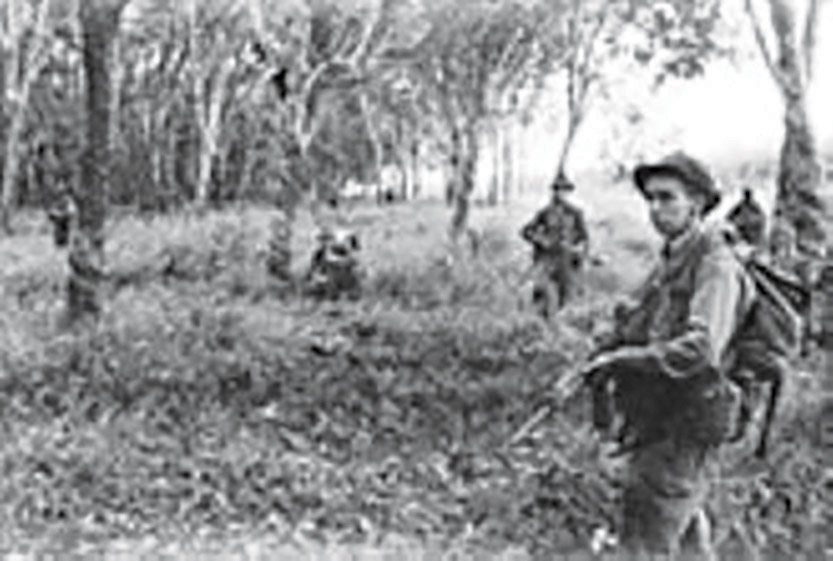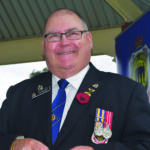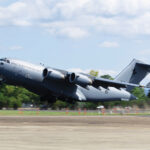3RAR soldiers South Vietnam during a January 1968 operation.
By Lyn Forde – President/Research Officer of St Marys & District Historical Society Inc.
I have no idea why anyone would desecrate memorials within Australia. They are there to commemorate the significance of a person, people and the history of our great country. Maybe they didn’t understand the significance of this memorial, so I am going to remind them of the service these soldiers did to deserve the National Serviceman’s plaque. Most of them had just left school, and probably some were in the school cadets, but nothing like what they were being called up for by their birthday date and an Australian wide lottery. So this is for all of those brave young soldiers who fought in a very deadly battle. The 3rd Battalion, Royal Australian Regiment (3RAR) is a mechanised infantry battalion of the Australian Army that was based in Kepong Lines, Townsville as part of the 3rd Brigade. 3RAR traces its lineage to 1945 and has seen operational service in Japan, Korea, Malaya, Borneo, South Vietnam, Rifle Company Butterworth, East Timor, the Solomon Islands, Afghanistan and Iraq. They served two tours in South Vietnam, the first from December 1967 with the battalion stationed in Phuoc Tuy province as part of the 1st Australian Task Force. The battalion took part in several operations and was involved in mine clearing, counter mortar, rocket tasks and reconnaissance in force operations. Between December 1967 and March 1968 Whisky Company from the Royal New Zealand Infantry Regiment was attached to 3RAR as an additional rifle company for various phases of battalion operations. As the ready reaction force ‘A’ Company 3RAR was responsible for clearing and securing the nearby provincial capital of Bà Rịa–Vũng Tàu during the Tet Offensive of February 1968. The battalion was then committed to Operation Coburg in February and March. During 26th–28th May 1968, 3RAR, while stationed at FSB Balmoral in a battalion defensive position, withstood two determined assaults by regimental sized units of the North Vietnamese People’s Army of Vietnam (PAVN) during the Battle of Coral–Balmoral. The battalion also played a role in Operation Toan Thang in April–May 1968. It was relieved by 9RAR in November 1968 and the battalion returned to Woodside, South Australia. During its first tour of Vietnam the battalion lost 24 killed and 93 wounded. On the 8th May 1970 a group of soldiers from 3RAR who had served in South Vietnam attacked 1,000 Moratorium marchers who were peacefully protesting against the war in Adelaide. This led to 21 soldiers facing disciplinary charges, including five who had been arrested by police and faced civil charges. The Army disciplinary heading led to at least 16 of the soldiers being fined or imprisoned for a short period. At least three of the soldiers were convicted when their cases were heard by the Adelaide Magistrate’s Court. Two did not receive a penalty and the other received a small fine. On 25th February 1971 the battalion returned to Phuoc Tuy Province and relieved 7RAR. It was based at Nui Dat and the Horseshoe. 3RAR joined with the work of pacification. The First Australian Task Fource (1ATF) had adopted the “Pacification Program” as its first priority in April 1969. Pacification involved seeking out and destroying the enemy in its base areas, preventing enemy access to the civilian population and helping to create a secure climate for South Vietnamese social, political and military life to develop. This work was demanding, dangerous and monotonous for the troops. It was the primary task carried out by the battalion during its second tour. By 1971 American and Australian forces in South Vietnam had reduced significantly and under President Nixon’s Vietnamization program U.S and allied forces undertook the process of handing military operations back to the South Vietnamese forces. The Vietnam’s People’s Armed Forces (PAVN) included Ground Force, Navy, Air Force, Border Guard and Coast Guard took this opportunity to try and re-enter areas that they had been previously forced out of earlier. This included the Australian and New Zealand Tactical area of responsibility of Phuoc Tuy Province. During the second tour the 3RAR battalion took part in several actions and was involved in an attack of fierce fighting on an enemy bunker system in the Long Khanh province against well-trained PAVN regular forces as part of Operation Overlord (6-7 June). The bunker system was captured by the battalion, along with a second bunker system further south. On the 1st October the battalion ceased its offensive operational commitment and returned to Nui Dat before returning to Australia by the end of 1971 after an eight-month tour. The battalion departed Vietnam arriving in Fremantle on 16th October and was replaced by 9RAR. During these operations 3RAR lost four killed and 27 wounded.
Sources: Wikipedia online, Australian War Memorial website.






